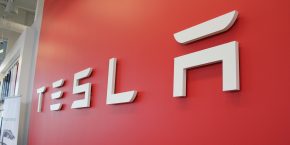
Tesla has launched its new Supercharger congestion fee at select stations in an attempt to shorten charging session times.
Back in 2019, Tesla introduced a new feature at Supercharger stations to help shorten charging sessions during busy times. The automaker started to limit owners’ state of charge (SOC) to 80% at select high-traffic sites.
Most people don’t charge all the way to 100% anyway, and the last 20% is much slower to get to, so this would have the potential to greatly reduce the average charging session time.
However, many owners were concerned by the limitation, as you sometimes do need to charge more than 80%. What can you do in those cases?
Tesla quickly modified the feature to automatically set the state of charge of vehicles at those stations at 80%, but owners could manually increase it back to 100% if they wanted to. This has been the solution for years and quelled most owners’ concerns. But now, Tesla is seeing the need for a more drastic approach.
We knew it was coming last month, thanks to Tesla hacker Green, but now it is official.
The automaker officially announced the new congestion fees, which it says replace idle fees when in effect:
At certain Supercharging locations, congestion fees will replace idle fees. A congestion fee is a fee you pay when a Supercharger is busy, and your vehicle’s battery is above a certain level. You can see the battery charge level where congestion fees apply on your vehicle’s touchscreen.
Tesla lists the conditions for congestion fees to apply at a Supercharger station:
- The Supercharger has congestion fees
- The Supercharger is busy
- Your vehicle’s battery is already at or above the congestion fee level
Top comment by Preston
In the summer of 2022, I took an 8,000-mile road trip across the United States. Most of the time an 80% charge limit would be fine, but there were a few places where we needed to charge to 100% when going off the Interstate. Fortunately those were mostly not in high-density areas, but it would be very frustrating to hit these charges in such a case.
Eventually this problem will mostly go away as they add more chargers. That's already true if you want to visit the Biggest Ball of Twine in Minnesota (two new chargers along our route), but they need them in Arco, ID for Carters of the Moon and one on the main loop in Yellowstone National Park, or at the four of the five entrances that lack them.
Tesla needs to find a fair way to determine who really needs the extra charge.
This will kill the strategy on my 2015 Model S of setting the charge to 100% and knowing it will trickle in the last bit for an hour, so I never get idle fees. (Newer cars will hit 100% much faster.) That's good for the system, as I'm certainly not the only one to notice that.
Tesla says that you will get a message when you charge at a station that has congestion fees, and there’s a 5-minute grace period.
So far, Tesla has only announced rates in the US:
| Country/Region | Currency | Congestion fee (per minute) | Congestion fee level (% battery charge) |
|---|---|---|---|
| United States | USD | $1.00 | 90% |
That’s basically an extra $1 per minute you stay at the Supercharger station after reaching 90% state of charge.
The goal is to reduce the average charging session time when a station is busy. The last 10% of a fast-charge session takes a lot of time, and people are often better off continuing to drive and, if needed, stopping somewhere else when the battery has been depleted again.
FTC: We use income earning auto affiliate links. More.




Comments